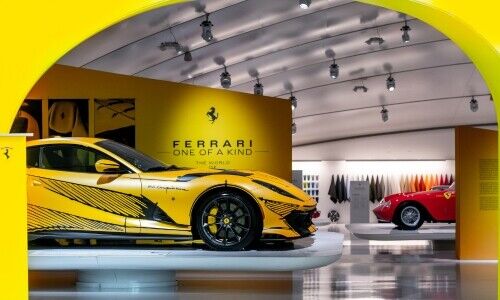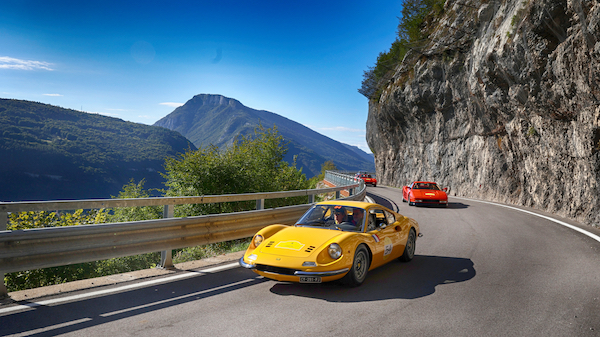How Ferrari Masters the Art of Scarcity, Exclusivity and Brand Mystique
Ferrari’s meteoric rise is not driven by production volume. While mass-market manufacturers like Volkswagen battle weak domestic demand and a costly transition to electric vehicles, Ferrari has mastered the art of scarcity, exclusivity, and brand mystique.
As a recent report by the «Wall Street Journal» (article behind paywall) details, the Italian marque has transformed itself into a luxury powerhouse, leveraging its cult-like following to fuel market dominance.
With a market capitalization of around $90 billion, Ferrari now surpasses Volkswagen, despite selling a mere 13,752 vehicles last year – compared to VW’s nine million. The reason? Ferrari is not a car company in the conventional sense. As CEO Benedetto Vigna emphasized in the «Wall Street Journal», «We are a luxury company that is also doing cars.»
The Economics of Scarcity
This strategy echoes the approach of French luxury brands. Just as Hermès and Chanel limit the production of certain handbags to maintain desirability, Ferrari ensures its most sought-after models are out of reach for the average buyer. Owning one of Ferrari’s hypercars isn’t just a matter of wealth – it requires a long-standing relationship with the brand.
Ferrari has embraced a simple yet powerful principle, famously stated by founder Enzo Ferrari: «Ferrari will always deliver one car less than the market demands.»
This exclusivity fuels demand, with limited-edition models like the $3.7 million F80 hypercar selling out before they even hit the showroom. The 799-unit production run wasn’t open to just anyone – only Ferrari’s most loyal customers were granted the privilege to purchase.
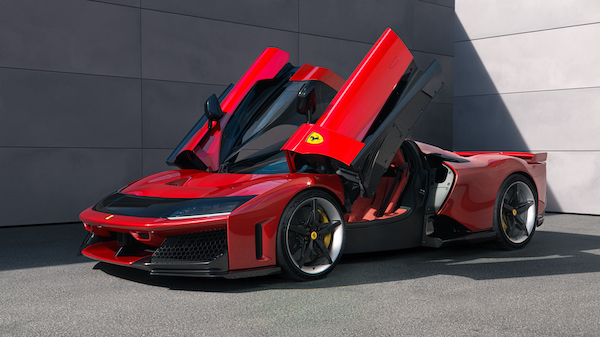
Current hypercar: Ferrari F80. (Image: Ferrari, Courtesy)
Threefold Increase in Price
Collectors, many of whom own multiple Ferraris, compete for access to these models. As the «WSJ» report highlights, some had to purchase at least ten Ferraris before even qualifying for the previous hypercar, LaFerrari. The result? The values of these exclusive models skyrocket.
A well-preserved LaFerrari, originally sold for $1.4 million in 2013, now trades for upwards of $3.8 million, well ahead of a second-hand Porsche 928 Spyder ($0.85 million) and the McLaren P1 ($1.15 million).
Client Ranking System
Ferrari doesn’t leave customer selection to chance. Its refined internal ranking system, overseen by the Maranello headquarters, tracks everything from purchase history to participation in Ferrari events. This ensures that only the most dedicated enthusiasts gain access to the rarest models.
«Cavalcade Classiche»: Private drives for clients. (Image: Ferrari, Courtesy)
The stock market success of the Italian carmaker stands in stark contrast to other high-performance brands. Porsche attempted to adopt a similar strategy with its 2022 IPO, but struggles in China and a miscalculated EV rollout have dampened investor confidence.
Way Ahead of Aston Martin, McLaren and Porsche
Pierre-Olivier Essig, an expert in European equities and Head of Research at London-based AIR Capital, recently highlighted the 50 percent drop in the German company's market valuation over just a year.
On LinkedIn, he wrote: «Chasing volumes while almost bankrupt in 2002 was the right strategy for Porsche when their first SUV was launched with performances far above competitors. But today, just the 911 remains competitive.»
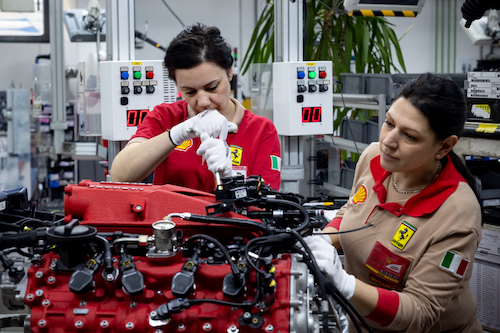
Petrol-powered excellence: Ferrari production in Maranello. (Image: Ferrari, Courtesy)
Meanwhile, Aston Martin and McLaren have struggled to match Ferrari’s financial stability, with the former burning 95 percent of its market capitalization since its IPO in 2018, and the latter recently coming under full control of Bahrain’s sovereign wealth fund.
Full Order Books Throughout 2026
Even Ferrari faces challenges. The WSJ notes that recent price hikes have softened the resale market for some models. However, its core strategy remains intact: Ferrari’s order book is already full through the end of 2026, fully absorbing the slowdown in China which finews.com reported. As long as the waiting lists stay long, Ferrari’s unparalleled success is set to continue.
Ferrari’s ability to blend automotive engineering with the principles of luxury branding has redefined the high-end car market. By making scarcity an asset and cultivating a devoted clientele, it has built a fortress around its brand.
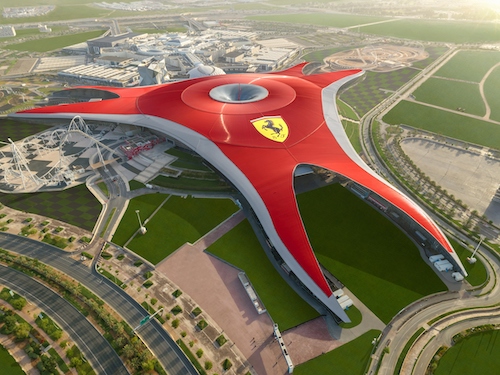
Ferrari Theme Park in Abu Dhabi. (Image: Ferrari, Courtesy)
Unicredit as Main Sponsor
The brand's appeal extends beyond automotive luxury, as evidenced by its recent multi-year partnership with Unicredit. As announced in September 2024 by Unicredit CEO Andrea Orcel and Ferrari, Italy's leading financial institution is replacing Santander as the main sponsor of Ferrari's Formula 1 team, Scuderia Ferrari – a collaboration that highlights the natural synergy between automotive passion, high-performance racing and elite financial services.
Unicredit will provide exclusive access to racing experiences for its high-net-worth clients, leveraging the passion and prestige of Ferrari to enhance its private banking offerings. As Ferrari continues to captivate ultra-wealthy collectors and motorsport enthusiasts, Unicredit is poised to strengthen its ties with the same elite customer base. The two companies are also planning to «collaborate to develop new banking opportunities for Ferrari fans and clients of the pan-European bank».
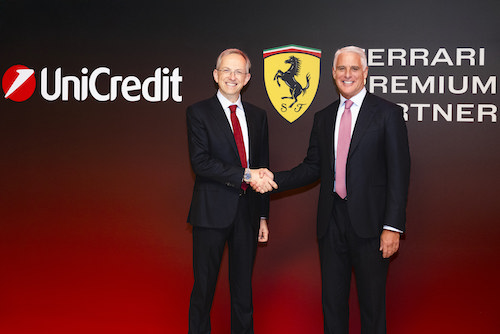
Benedetto Vigna (left) and Andrea Orcel (right) in January 2025. (Image: Ferrari)
A Small Caveat
That said, finews.com would like to add a caveat. As everyone with a true Ferrari aficionado in their circle knows, the brand’s magic isn’t just about road cars—it’s deeply tied to its legacy in Formula 1. And while Ferrari remains one of the most storied names in the sport, its on-track performance has left fans wanting for years.
The last Constructors’ Championship by the Scuderia Ferrari dates back to 2008 with Kimi Räikkönen and Felipe Massa, a drought that stands in stark contrast to the company’s dominance in the luxury automotive market. This performance gap could eventually tarnish Ferrari’s mystique. However, this seems a distant concern for now.

